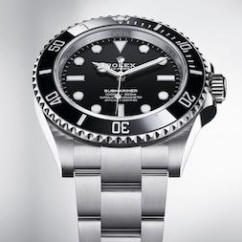Articles and News
The Lesson Of Rolex: When Innovation Is A Continuous Process | November 18, 2020 (0 comments)

Geneva, Switzerland--In watchmaking circles, people tend to mock Rolex fans who buzz with excitement on social media because the brand with the crown logo has made some minute change – the shape of a hand, a touch of colour – to one of its iconic models. But they’ve got it all wrong. Because that is precisely the essence of innovation as practised by Rolex.
It is the very source of its undeniable, unabated global success. Take the case of the Submariner. Starting as a radical, disruptive innovation – the Submarine watch of 1922, the first step towards waterproof watches, then the Oyster in 1926 – its subsequent history is one of a slow, gradual accumulation of innovations, sometimes discreet, all of them stages in the steady improvement of a product which nevertheless remains virtually identical in appearance.
The 1953 Submariner was the first diving wristwatch to be waterproof down to 100 meters. In 1954, it was made waterproof to 200 meters. In 1969 a date was added, and 1977 the triplock crown. In 1979 a sapphire crystal was added and the watch became waterproof to 300 meters, which continues today.
To read more and see a visual timeline of Submariner’s subtle advancements, click here to continue reading on EuropaStar.com, part of the ongoing editorial alliance between Europa Star and The Centurion.
The Centurion is very pleased to offer an editorial relationship with the venerable Europa Star, founded in 1927 and reporting in-depth on the watch industry ever since. Headquartered in Geneva, Switzerland, Europa Star launched online industry coverage in 1995 and is widely considered among the most authoritative watch journalist organizations in the world.







